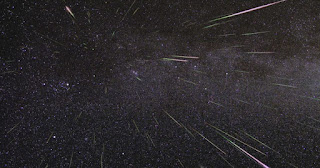What Makes the Quadrantids Meteor Shower Exceptional?
The Quadrantids stand out as one of the premier meteor showers of the year due to their dazzling intensity and the potential for witnessing numerous meteors in a short timeframe. Unlike other meteor showers that last for days, the peak of the Quadrantids is ephemeral, lasting only a few hours. This brief but brilliant display is a result of the Earth crossing the debris trail at a perpendicular angle, coupled with the fine particle size of the meteoroids. During the peak, under ideal conditions, observers can expect to see between 60 to 200 meteors per hour, including the spectacularly luminous "fireball" meteors, which can be significantly brighter than magnitude -3.
Origins of the Quadrantids: A Celestial Puzzle
The Quadrantids originate from the remnants of 2003 EH1, an asteroid—or potentially a "dead comet" or the enigmatic "rock comet"—which completes an orbit around the Sun every 5.52 years. As celestial bodies like 2003 EH1 approach the Sun, they shed dust that forms a trail along their orbit. Annually, as Earth traverses these dusty trails, the debris collides with our atmosphere, incinerating and creating the vibrant streaks we observe as meteors. The colors of these streaks are dictated by the chemical composition of the meteoroids.
The radiant point, from where the Quadrantids appear to emanate, is tied to the now obsolete constellation Quadrans Muralis. Situated between the well-known constellations of Bootes and Draco, near the Big Dipper, Quadrans Muralis was not included in the International Astronomical Union's list of modern constellations established in 1922. However, the meteors seem to radiate from the area near the modern constellation Bootes, leading to the alternate name "Bootides" for this meteor shower.
How to Observe the 2024 Quadrantids: Tips for Stargazers
To witness the grandeur of the Quadrantids' peak, look to the northeast after 01:00 a.m. on January 4, 2024. Ensure you have a clear view, free from natural and artificial obstructions. The naked eye is the best tool for meteor watching, as it allows for the widest field of view. To enhance your night vision, avoid bright lights and give your eyes time to adapt to the darkness. With a bit of luck and clear skies, you'll be treated to a memorable astronomical event.
At freeastroscience.com, we are committed to providing you with high-quality, scientifically accurate content that fuels your passion for the cosmos. May the skies be clear, and your observations be breathtaking as you explore the wonders of the Quadrantids meteor shower.



Post a Comment